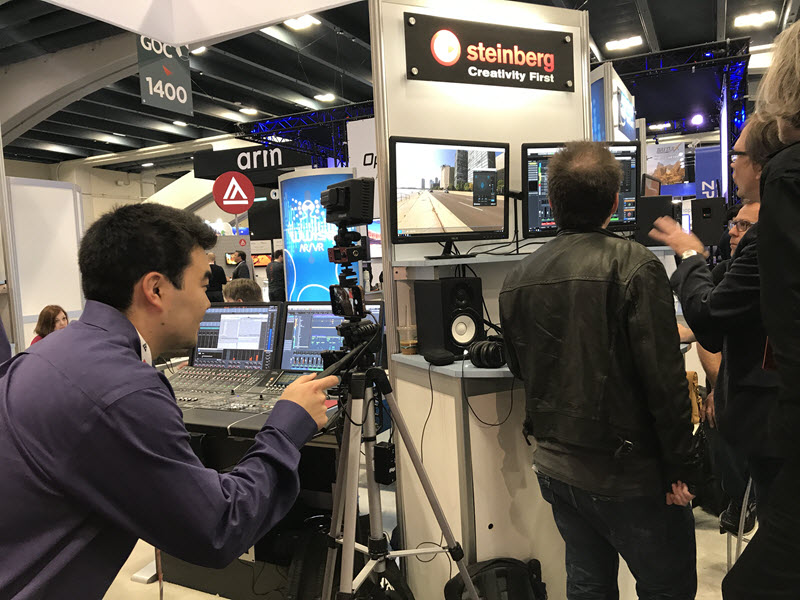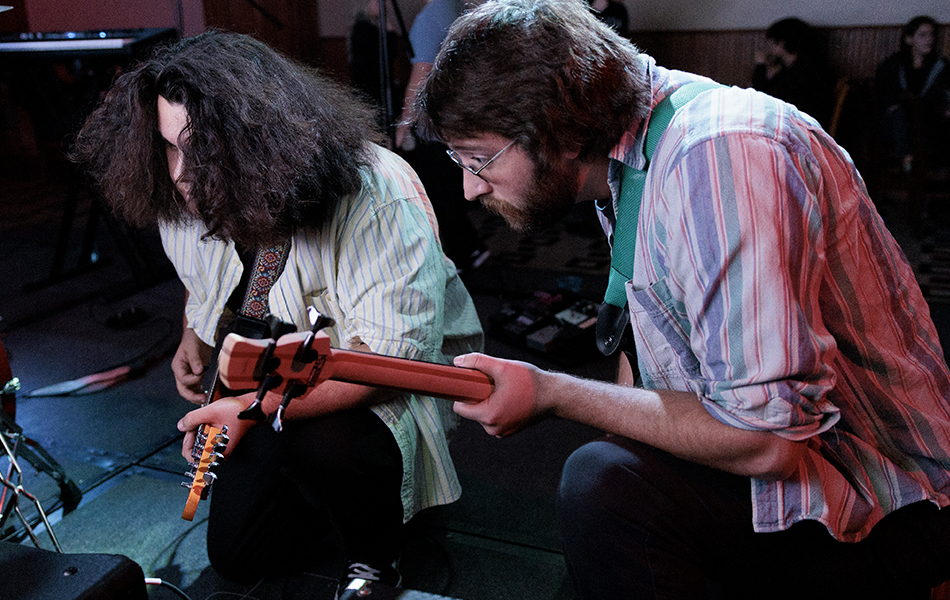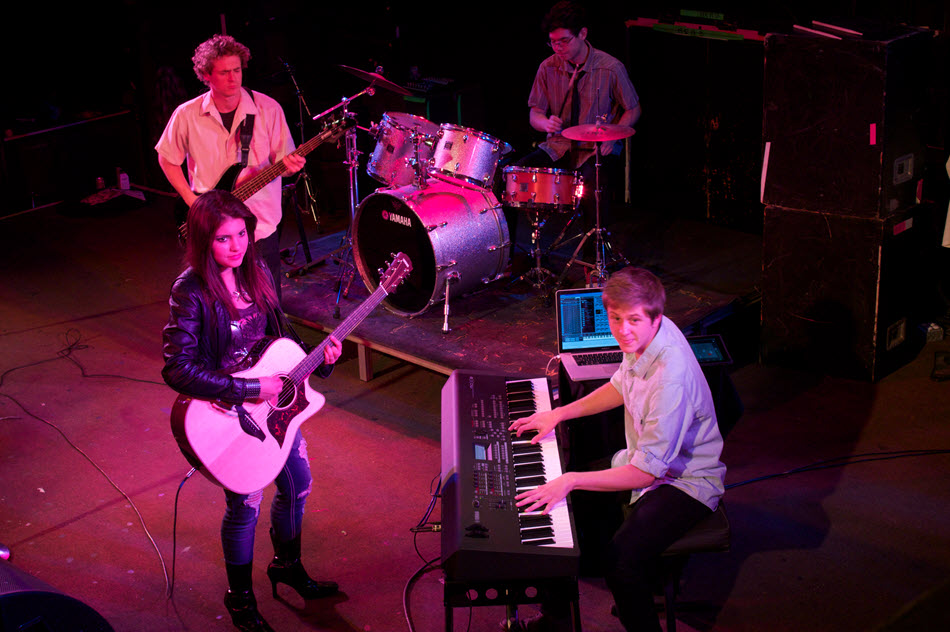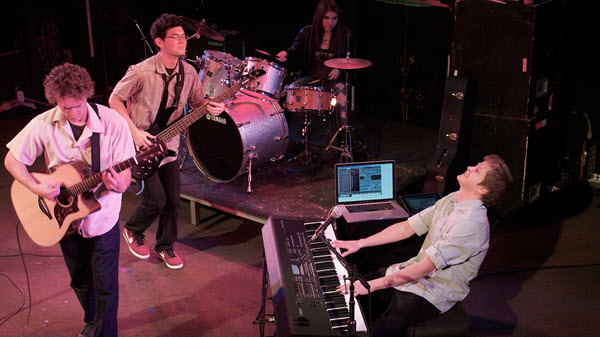Tagged Under:
Behind the Scenes at NAMM: The Yamaha Main Stage
Transforming a plaza into a festival concert site.
One of the most exciting attractions at NAMM each year are the Yamaha Main Stage concerts. Since 2013, the Main Stage has hosted legendary artists such as Stevie Wonder, Tony Bennett, Elton John, Earth, Wind & Fire, John Legend and U2 drummer Larry Mullen Jr. In 2018, the venue was moved from the indoor Anaheim Marriott Ballroom to the outdoor Convention Center Grand Plaza, allowing larger numbers of people to enjoy the concerts.
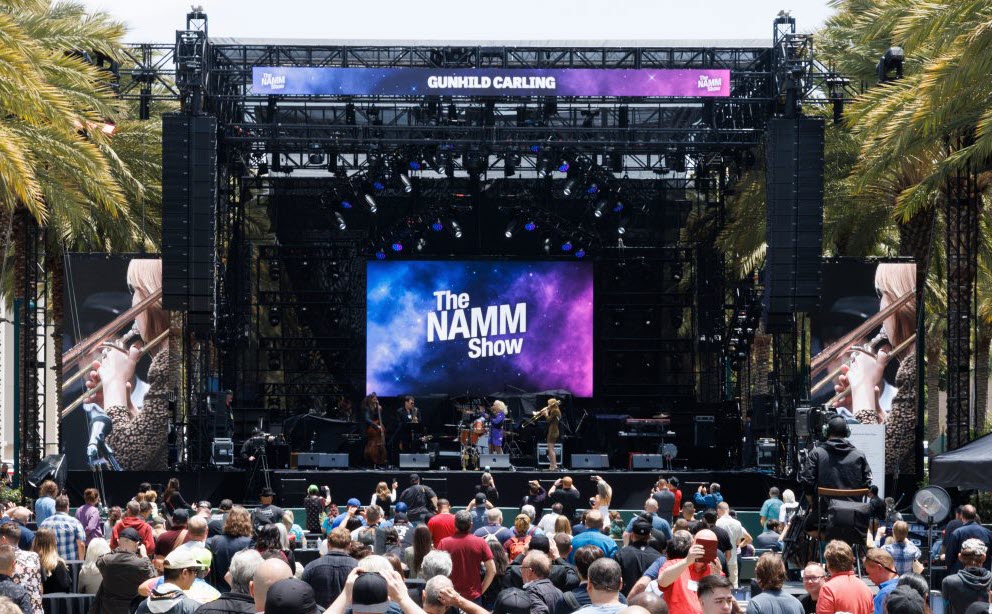
The 2022 NAMM show (the first in-person gathering held in two years) featured two Main Stage events: A Night of Worship with Fred Hammond and Saddleback Worship, and a Saturday concert that included performances from Kandace Springs, Preservation Hall Jazz Band, and Tank and The Bangas.
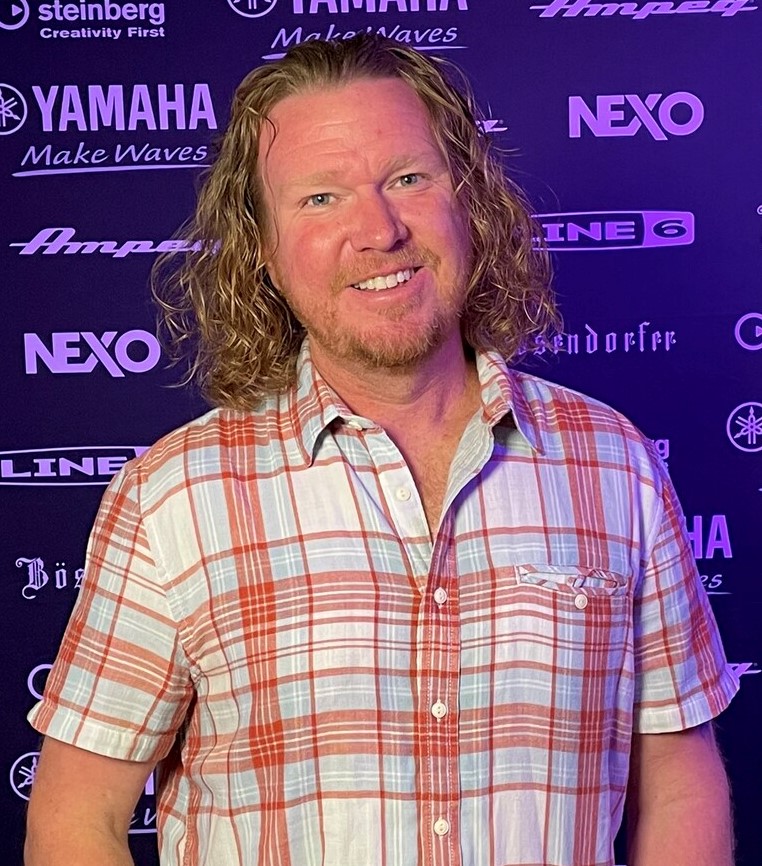
Overseeing production was Ryan Nelson, the Yamaha Director of Recording & Concert Production, whose resume includes work with Kenny Chesney, Matchbox Twenty, The Monkees, Alabama, Gretchen Wilson and ZZ Top, among others. Ryan recently provided us with a behind-the-scenes look at what it takes to get NAMM Main Stage events from planning to reality.
SL: You’ve been running the Main Stage since 2013. How was this year different?
Ryan Nelson: In the past we’ve had a “house band” with core musicians like Nathan East, Greg Phillinganes and Teddy Campbell, and Yamaha Artists would make guest appearances with them, performing one or two songs. This year we treated it more like a music festival, where each band played a full set, so we had the opportunity to work with their engineers, stage managers and backline techs. It’s a unique opportunity for musicians and their crews to feel the magnitude of what Yamaha brings to the music industry. Some of the front-of-house (FOH) or monitor engineers weren’t familiar with the consoles, so we had teams in place to work with them in pre-production, helping them create and edit show files and making sure they were comfortable using the desks. We also had product specialists on-site to help with instrument setup if, for example, a guitar player wanted the action adjusted on a guitar.
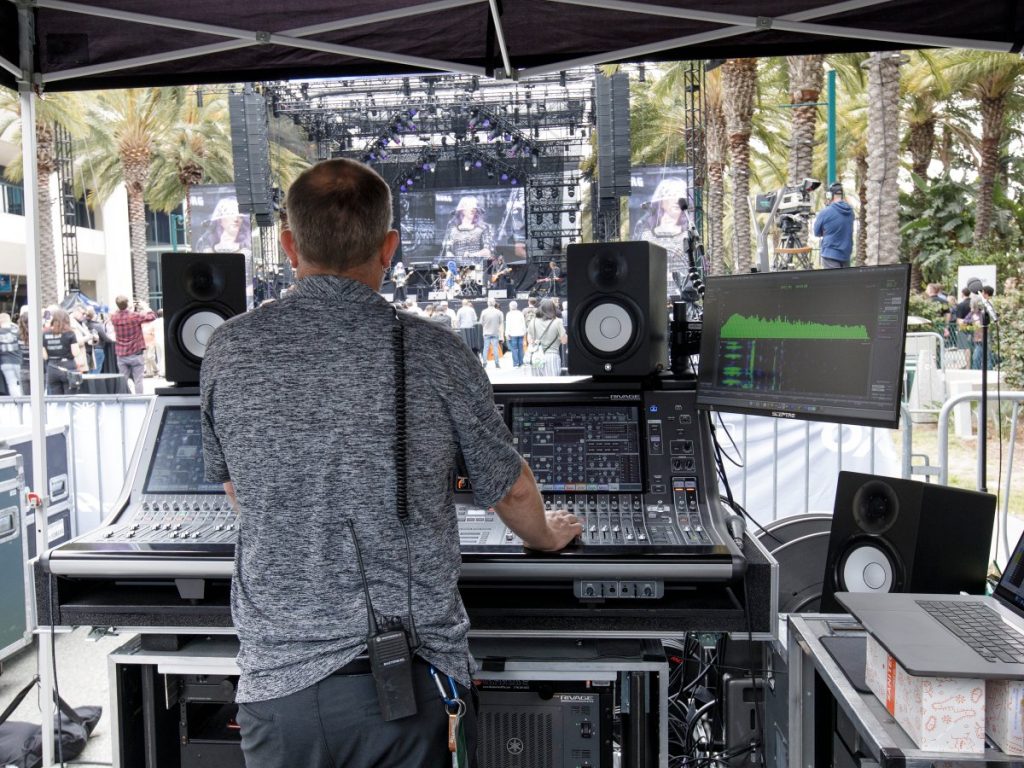
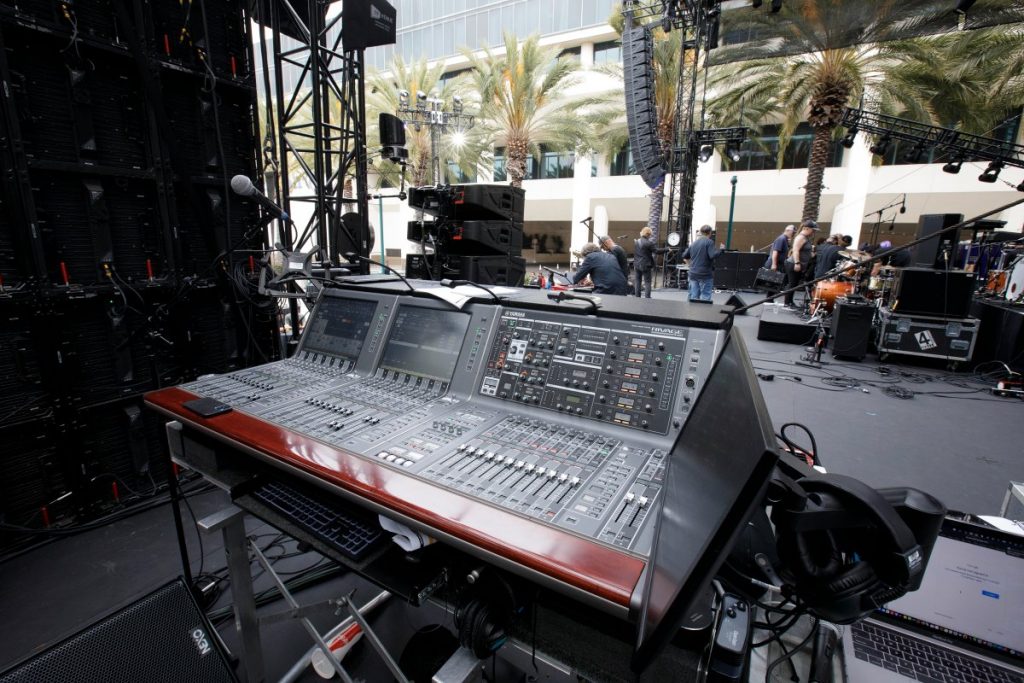
SL: How many days did it take to set up?
RN: We started dropping gear off and staging trucks on the Sunday evening, which gave us four days to load in and set up. Normally, we’d like to have one more day for load-in, but this year we were up against a Star Wars™ convention.
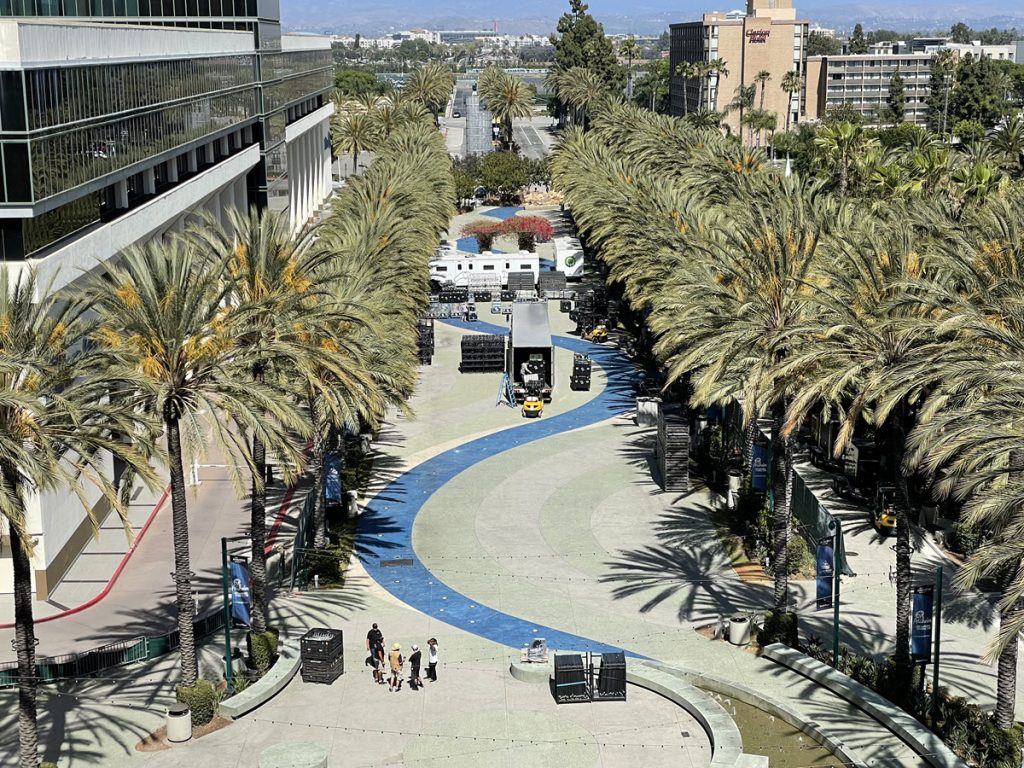
SL: What are some of the challenges that you face each year?
RN: One challenge is that there isn’t a real load-in area, so we have to be very cognizant of scheduling when things can load in or out. When we show up at the Grand Plaza, it is just a concrete pad in front of the convention center in between two hotels and a bunch of palm trees. We’re responsible for bringing everything required to make the shows happen: power generators stage decking, roof, motors, rigging, the ballasts that it takes to hold all of that up — even the dressing room trailers fall underneath our purview. The amount of trucks and gear that have to come into that small area is phenomenal. We make sure that trucks can get in, unload their gear, and get out to make room for the next group. We’re basically turning the Grand Plaza into a festival-type venue for NAMM.
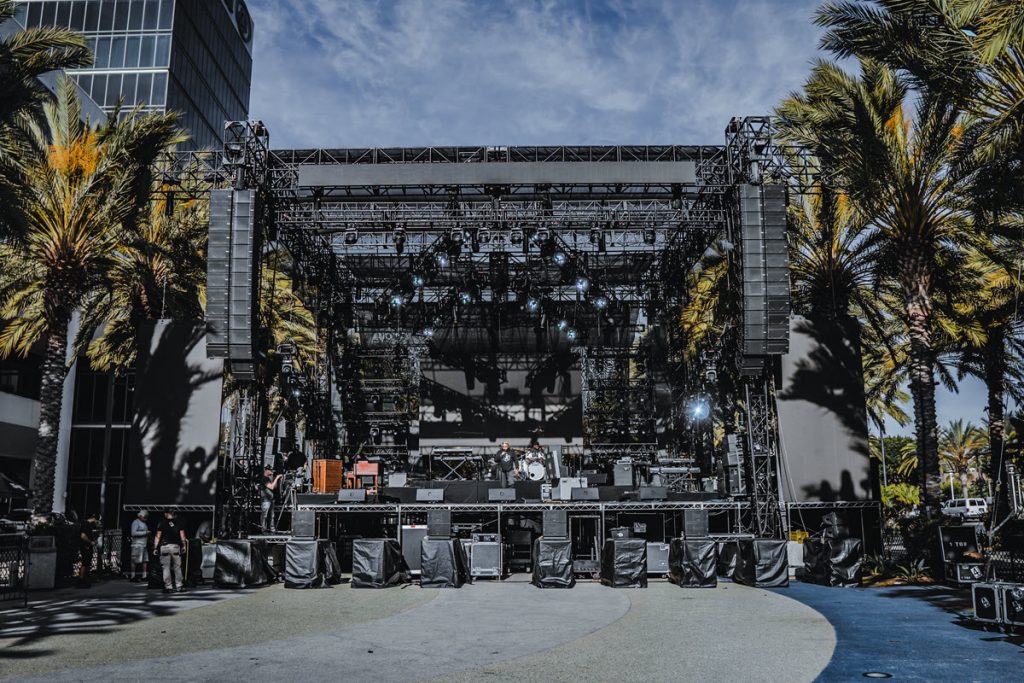
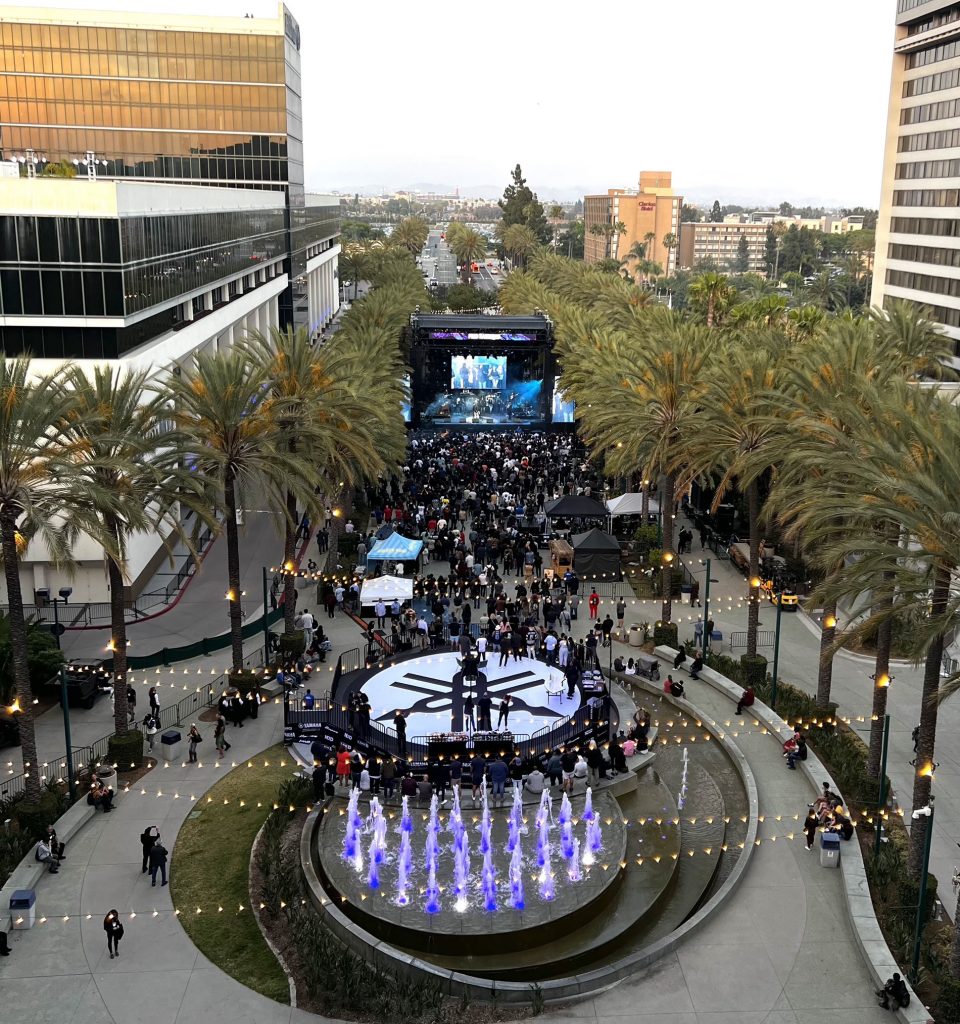
Another big challenge is that there isn’t a proper backstage area at the Grand Plaza because things are happening all around you. This year we flipped the direction of the stage so that Yamaha could provide a VIP experience from their booth on the third floor of the convention center looking down towards the stage. But the Grand Plaza is also the main entrance for NAMM, so now people entering from the hotels were looking at the back of the stage. We set up LED screens and a PA on the backside of the stage to create a welcoming environment — as opposed to just a backstage area where nothing is happening. If there is overflow of people behind the stage or if they’re eating at the food trucks, they can see and hear what’s happening on stage.

SL: What equipment was used for the main PA system?
RN: All of the consoles were Yamaha Rivage. We used a Rivage CS-R5 Control Surface for FOH (front-of-house), a CS-R10 for monitors and a CS-R3 for the broadcast/live stream mix. We had a 58-channel isolated analog split between FOH and monitors, and we used all of those channels — though not necessarily all at the same time. Each of the systems also used Yamaha HY256, HY144D, and HY144D-SRC expansion cards that enabled us to connect to other devices via Dante® if needed, or provide feeds for virtual recording and playback. The PA speakers and amps were all NEXO, and were provided by Reach Communications (Minneapolis, MN) and Mastermind Production Group (Fullerton, CA).
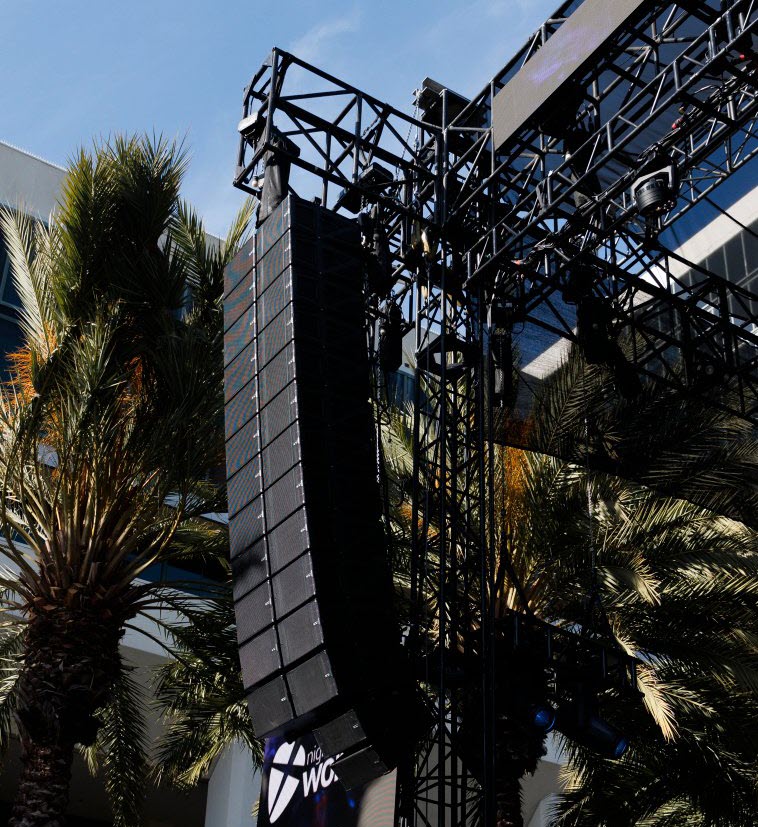
SL How did the new generation of Rivage consoles facilitate operations that were difficult in the past?
RN: The way that Rivage consoles network makes it possible to quickly patch, repatch or pull channels that we didn’t think we’d need at FOH, monitors or on the streaming side. For example, the Disneyland marching band played at the front entrance of the Anaheim Convention Center to kick off NAMM, and at the very last minute they asked if their performance could go livestream. It was easy to flip a camera around for the visual, but we also needed microphones for the audio. We were able to utilize some of the inputs to the FOH console and patch them to the other consoles via the TWINLANe network. This would have been much more difficult to deal with if we were using copper snakes.
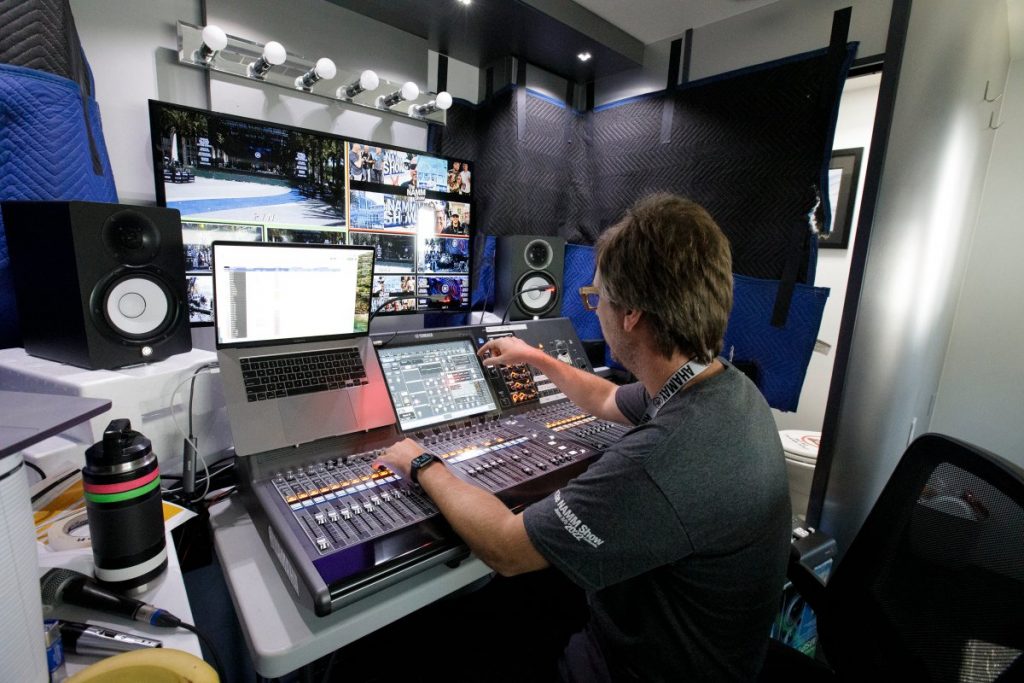
SL: What sort of response did you get from the artists and the engineers?
RN: We had a really positive response from both artists and engineers. The engineers were able to get first-hand experience using Rivage consoles in a real-world situation. They could hear the EQ and processing for themselves in a familiar context, and they were able to walk away with a show file they could use as a starting point for their monitor or front-of-house mixes.
On the artist side we had a lot of positive reactions too. There were keyboard players who may have had a preference for a particular instrument, but when they heard, for example, a Yamaha YC88, they wanted to make it their go-to stage keyboard from then on. And it seems like every time we put a Yamaha guitar in a guitar player’s hand, their reaction was, “I’m taking this with me! This is my new axe!” It’s great to see that kind of excitement.
SL: Is seeing that sort of reaction your favorite part of doing this?
RN: Yes, and also I love being behind the scenes and watching everything from this side. I’ve been mixing front-of-house for years and have mixed for some great artists. I wish the bands could experience what it’s like at front-of-house. I’ve always seen that position as an extension of what’s happening on stage, and it translates to the audience. It’s amazing to be in the middle of that energy!
And I’d just like to add that these shows would not be possible without the behind-the-scenes work of an entire Yamaha team that includes Chris Gero, John Wittmann, Ben James, Jalissa Gascho, Rachel Mills, Jeff Woods, Helen Pursell, Greg Crane, Preston Gray and Tres Cozad.










